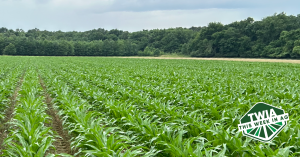
In her presentation and the resulting published article, titled “Lagoons, Under the Surface,” Ms. Jennings discussed the results of an in-depth investigation of bioremediation and biological factors involved in reducing sludge at a municipal wastewater treatment facility lagoon system.
A one-year bioremediation plan was implemented for a municipal wastewater treatment facility with 2 primary lagoons in which sludge depths had reached 5–7 feet. The lagoons were at risk of upset and wastewater processing capacity was reduced. Sludge levels were reported for baseline and quarterly sludge judging, supplemented with ATP and DNA analyses of the microorganism biomass. The results of the ATP and DNA analyses pointed out the often-misunderstood fact that wastewater treatment facility lagoon sludge is not inert: it is the most biologically active layer of the water column and can be efficiently controlled and reduced through proper bioremediation interventions. Sludge depth was biologically reduced by an average of 45%. This represented 17,800 dry tons of sludge that did not need to be mechanically removed and hauled to a disposal location, a potential savings of over $6 million.

Related Posts

This Week in Ag #68
How many kernel rows, or rounds, will an ear of corn have? That’s being determined right now in my cornfield. My corn has hit the critical V6 growth stage (in just 31 days, no less). Next to emergence and pollination, V6 is one of the most significant times of the plant’s life. This is when the

This Week in Ag #66
When asked if he was finished with planting, dad would frequently respond by saying, “the first time.” His cynicism aside, replant decisions can be difficult. This year, too many growers are faced with that decision. If you plant when the soil is cold and wet, you’re inviting problems. But even if you plant in good soil conditions,

Advantages of Micro Carbon Technology®
Bio Huma Netics, Inc. products are manufactured with our exclusive, proprietary Micro Carbon Technology® which is our process of “complexing” small molecules containing carbon to nutrients. These ultra-fine molecules are excellent nutrient carriers that enable more efficient nutrient absorption. This Micro Carbon Technology® makes HUMA GRO® nutrients much more effective and efficient than any other nutrient

